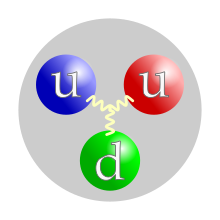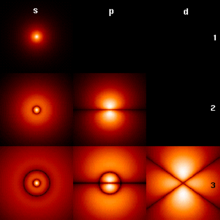núcleo atómicoproton binding
(d)voltage-gated proton channel activity
(d)thiamine:proton symporter activity
(d)trehalose:proton symporter activity
(d)mannose:proton symporter activity
(d)fructose:proton symporter activity
(d)D-glucose:proton symporter activity
(d)allantoin:proton symporter activity
(d)amino acid:proton symporter activity
(d)proline:proton symporter activity
(d)carbohydrate:proton symporter activity
(d)alpha-glucoside:proton symporter activity
(d)glucosinolate:proton symporter activity
(d)glucose:proton symporter activity
(d)selenite:proton symporter activity
(d)myo-inositol:proton symporter activity
(d)folic acid:proton symporter activity
(d)sucrose:proton symporter activity
(d)sulfate:proton symporter activity
(d)P-type proton-exporting transporter activity
(d)nitrate:proton symporter activity
(d)auxin:proton symporter activity
(d)pyrophosphate hydrolysis-driven proton transmembrane transporter activity
(d)hexose:proton symporter activity
(d)proton transmembrane transporter activity
(d)proton transmembrane transport
(d)proton channel activity
(d)solute:proton symporter activity
(d)phosphate:proton symporter activity
(d)peptide:proton symporter activity
(d)ferric enterobactin:proton symporter activity
(d)acetate:proton symporter activity
(d)malate:proton symporter activity
(d)energy coupled proton transport, down electrochemical gradient
(d)energy coupled proton transmembrane transport, against electrochemical gradient
(d)potassium:proton symporter activity
(d)uridine:proton symporter activity
(d)phenylalanine:proton symporter activity
(d)lysine:proton symporter activity
(d)aromatic amino acid:proton symporter activity
(d)gamma-aminobutyric acid:proton symporter activity
(d)cytosine:proton symporter activity
(d)nucleoside:proton symporter activity
(d)galactose:proton symporter activity
(d)arabinose:proton symporter activity
(d)D-xylose:proton symporter activity
(d)lactose:proton symporter activity
(d)raffinose:proton symporter activity
(d)citrate:proton symporter activity
(d)alpha-ketoglutarate:proton symporter activity
(d)shikimate:proton symporter activity
(d)fucose:proton symporter activity
(d)xanthosine:proton symporter activity
(d)sialic acid:proton symporter activity
(d)3-hydroxyphenyl propionate:proton symporter activity
(d)rhamnose:proton symporter activity
(d)2-keto-3-deoxygluconate:proton symporter activity
(d)lactate:proton symporter activity
(d)quaternary ammonium group:proton symporter activity
(d)glycine betaine:proton symporter activity
(d)succinate:proton symporter activity
(d)maltose:proton symporter activity
(d)acetylcholine:proton antiporter activity
(d)monovalent cation:proton antiporter activity
(d)lithium:proton antiporter activity
(d)manganese:proton antiporter activity
(d)solute:proton antiporter activity
(d)amiloride:proton antiporter activity
(d)cycloheximide:proton antiporter activity
(d)benomyl:proton antiporter activity
(d)monoamine:proton antiporter activity
(d)polyamine:proton antiporter activity
(d)fluconazole:proton antiporter activity
(d)aminotriazole:proton antiporter activity
(d)calcium:proton antiporter activity
(d)sodium:proton antiporter activity
(d)potassium:proton antiporter activity
(d)tetracycline:proton antiporter activity
(d)acridine:proton antiporter activity
(d)azole:proton antiporter activity
(d)metal ion:proton antiporter activity
(d)chloride:proton antiporter activity
(d)synaptic vesicle lumen acidification
(d)proton export across plasma membrane
(d)gamma-aminobutyric acid:proton antiporter activity
(d)zinc:proton antiporter activity
(d) 



